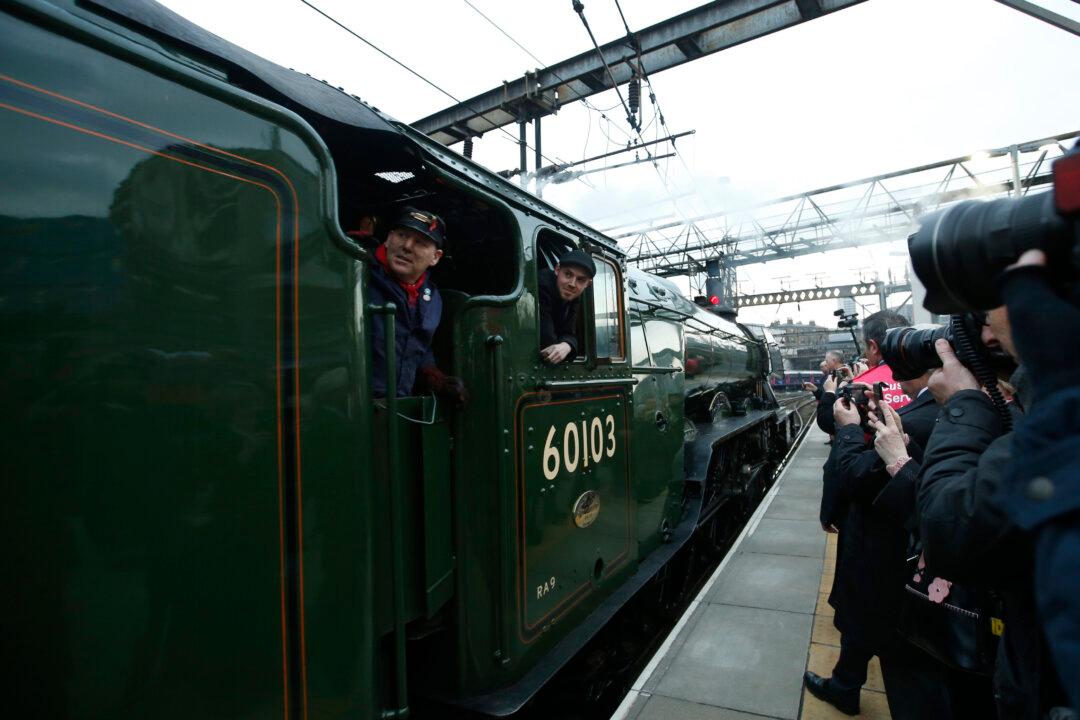LONDON—Several people were injured after the Flying Scotsman, the historic steam locomotive that’s celebrating its 100th anniversary this year, was involved in a low-speed crash with another heritage train in the Scottish Highlands, authorities said Saturday.
The National Railway Museum said the “shunting incident” took place at Aviemore Station in the Cairngorms National Park on Friday. The station is home to a heritage train line that takes visitors on steam train trips in northern Scotland.





